
The Thirty-Nine Steps is a 1915 adventure novel by the Scottish author John Buchan, first published by William Blackwood and Sons, Edinburgh. It was serialized in All-Story Weekly issues of 5 and 12 June 1915, and in Blackwood's Magazine between July and September 1915, before being published in book form in October of that year. It is the first of five novels featuring Richard Hannay, an all-action hero with a stiff upper lip and a knack for getting himself out of tricky situations.
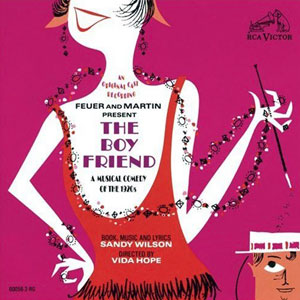
The Boy Friend is a musical by Sandy Wilson. Its original 1954 London production ran for 2,078 performances, briefly making it the third-longest running musical in West End or Broadway history until they were all surpassed by Salad Days. The Boy Friend marked Julie Andrews' American stage debut.

Greenmantle is the second of five novels by John Buchan featuring the character Richard Hannay. It was first published in 1916 by Hodder & Stoughton, London. It is one of two Hannay novels set during the First World War, the other being Mr Standfast (1919); Hannay's first and best-known adventure, The Thirty-Nine Steps (1915), is set in the period immediately preceding the war.

Mary Hartman, Mary Hartman is an American satirical soap opera that aired in daily weeknight syndication from January 1976 to July 1977. The series follows the titular Mary Hartman, an Ohio housewife attempting to cope with various bizarre and violent incidents occurring around her. The series was produced by Norman Lear, directed by Joan Darling, Jim Drake, Nessa Hyams, and Giovanna Nigro, and starred Louise Lasser, Greg Mullavey, Dody Goodman, Norman Alden, Mary Kay Place, Graham Jarvis, Debralee Scott, and Victor Kilian. The series writers were Gail Parent and Ann Marcus.
Major-General Sir Richard Hannay, KCB, OBE, DSO, is a fictional character created by Scottish novelist John Buchan and further made popular by the 1935 Alfred Hitchcock film The 39 Steps, very loosely based on Buchan's 1915 novel of the same name. In his autobiography, Memory Hold-the-Door, Buchan suggests that the character is based, in part, on Edmund Ironside, from Edinburgh, a spy during the Second Boer War.

Mr Standfast is the third of five Richard Hannay novels by John Buchan, first published in 1919 by Hodder & Stoughton, London.
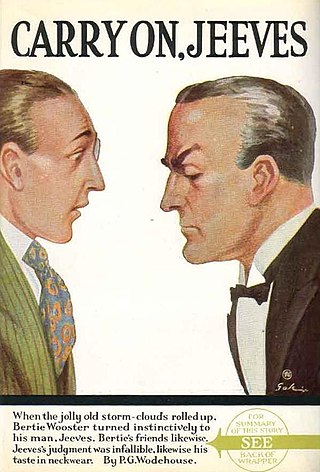
Carry On, Jeeves is a collection of ten short stories by P. G. Wodehouse. It was first published in the United Kingdom on 9 October 1925 by Herbert Jenkins, London, and in the United States on 7 October 1927 by George H. Doran, New York. Many of the stories had previously appeared in the Saturday Evening Post, and some were rewritten versions of stories in the collection My Man Jeeves (1919). The book is considered part of the Jeeves canon.
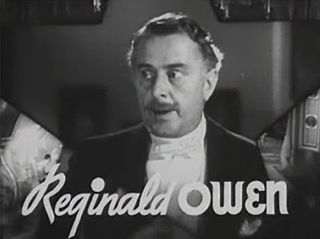
John Reginald Owen was a British actor. He was known for his many roles in British and American films and television programs.

The Thirty Nine Steps [sic] is a British 1978 thriller film directed by Don Sharp, with screenplay by British playwright Michael Robson, based on the novel The Thirty-Nine Steps by John Buchan. It was the third film version of the 1915 novel.

Reginald "Reggie" Pepper is a fictional character who appears in seven short stories by English author P. G. Wodehouse. Reggie is a young man-about-town who gets drawn into trouble trying to help his pals. He is considered to be an early prototype for Bertie Wooster, who, along with his valet Jeeves, is one of Wodehouse's most famous creations.
Ludovic "Sandy" Gustavus Arbuthnot, later 16th Lord Clanroyden is a fictional character who appears in various books by John Buchan in the Richard Hannay series. These books include Greenmantle, The Three Hostages, The Courts of the Morning, and The Island of Sheep, but not the first in the series, The Thirty-Nine Steps. He also appears in The League of Heroes by Xavier Mauméjean. His particular expertise is in adopting disguises which completely take in Hannay, the "friend [he] knows best in the world".
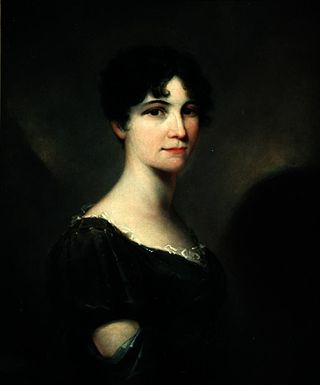
Harriet Arbuthnot was an early 19th-century English diarist, social observer and political hostess on behalf of the Tory party. During the 1820s she was the closest woman friend of the hero of Waterloo and British Prime Minister, the 1st Duke of Wellington. She maintained a long correspondence and association with the Duke, all of which she recorded in her diaries, which are consequently extensively used in all authoritative biographies of the Duke of Wellington.

The Island of Sheep is a 1936 novel by the Scottish author John Buchan, the last of his novels to focus on his characters Richard Hannay and Sandy Arbuthnot. It was published in the United States under the title The Man from the Norlands.

The Courts of the Morning is a 1929 adventure novel by John Buchan, featuring his character Sandy Arbuthnot. The prologue is narrated by Richard Hannay, so the novel is sometimes included in Buchan's Hannay series. The action is set in Olifa, a fictional country on the west coast of South America.
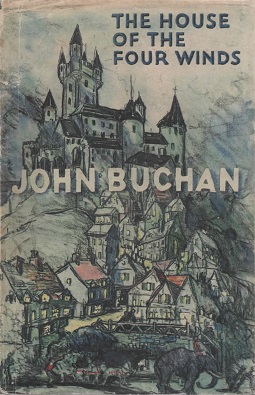
The House of the Four Winds is a 1935 adventure novel by the Scots author John Buchan. It is a Ruritanian romance, and the last of his three Dickson McCunn books. The novel is set in the fictional Central European country of Evallonia and opens two years after the events recounted in Castle Gay.
Sir Edward Leithen is a fictional character in several of John Buchan's novels: The Power-House, John Macnab, The Dancing Floor, The Gap in the Curtain and Sick Heart River. These were published over a number of years, the first in 1916, and the last in 1941, one year after Buchan's death. Leithen's name is borrowed from the Leithen Water, a tributary of the River Tweed, one of many references to the Scottish Borders in Buchan's novels.
The Three Hostages is a 1977 British television film directed by Clive Donner, produced by Mark Shivas, and starring Barry Foster as Richard Hannay, a retired British soldier who works occasionally for the British intelligence services, Diana Quick as Mary Hannay, John Castle as Dominick Medina, and David Markham as Greenslade. It was based on the 1924 John Buchan thriller novel The Three Hostages.
The Three Hostages was a British television series which aired on the BBC in 1952. It was an adaptation of the 1924 novel The Three Hostages by John Buchan featuring his character Richard Hannay who is played by Patrick Barr. It consisted of six 30 minutes episodes. The BBC adapted the story again in 1977 as a film The Three Hostages with Barry Foster as Hannay. Broadcast live before telerecording was utilised in the UK, the series is missing, believed lost.
Sir Archibald Roylance was a fictional character created by John Buchan. He appeared in many Buchan novels, never as the protagonist. He was a good friend of Richard Hannay and Edward Leithen despite being younger than them.

The Half-Hearted is a 1900 novel of romance and adventure by the Scottish author John Buchan. It was Buchan's first novel in a modern setting and was written when he was 24 while working for an All-Souls fellowship and reading for the bar.














